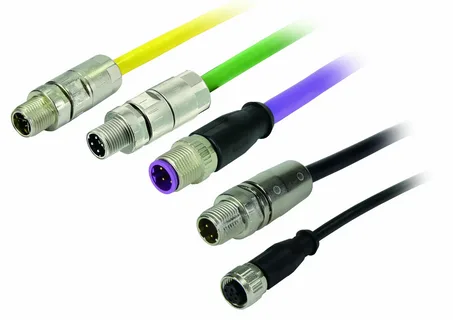In the rapidly evolving world of electronics and industrial automation, the choice of connectors plays a critical role in ensuring robust and secure communication between components. Two types of connectors that have sustained long-term popularity due to their reliability and versatility are the D subminiature connectors and the M12 connectors. Whether you are designing communication systems, machinery, or control panels, understanding these connectors’ features, applications, and benefits is essential. This article explores these critical components in detail, highlighting their unique characteristics and where to source high-quality versions.
What Are D Subminiature Connectors?
D subminiature connectors, often abbreviated as D-sub connectors, have been a staple connector type in electronic interconnects since their development in the 1950s. Their name derives from the D-shaped metal shield that surrounds the pins, providing mechanical support, polarization, and electromagnetic shielding.
They are widely known for facilitating communication and data transfer across numerous protocols such as RS-232, RS-422, RS-485, and VGA. Due to their versatility, they are extensively employed in a variety of applications, including:
- Industrial automation systems
- Computing and telecommunications
- Medical devices
- Automotive electronics
- Test and measurement instruments
D sub connectors come in various pin counts and sizes, typically ranging from 9 pins up to 50 pins, catering to diverse signal and power transmission needs.
Key Features of D Subminiature Connectors
- Shielded Design: The D-shaped metal shell offers excellent protection against EMI (electromagnetic interference), essential in preserving signal integrity.
- Variety of Pin Counts and Types: From 9-pin models ideal for RS-232 communications to high-density options accommodating up to 78 contacts, these connectors fit numerous configurations.
- Durability and Robustness: Designed to withstand mechanical shock, vibration, and environmental ingress, making them suitable for industrial and harsh environment applications.
- Termination Options: Available with solder cups, crimp pins, IDC (insulation displacement contact) connectors, and solder pin termination styles.
- Current Ratings: Standard D Subs support 5 amps per contact, while power-combo D subs handle up to 40 amps, facilitating power and data transmission in one connector.
- Compact Variants: Micro-D connectors offer a space-saving solution with one-third the size of standard D subs, typically carrying up to 1 amp per contact.
Exploring M12 Connectors: Compact, Reliable, and Versatile
Alongside D subminiature connectors, M12 connectors have emerged as a preferred choice in industrial automation and control systems. The M12 name comes from the 12mm locking thread size of these circular connectors, which are designed to provide a secure connection with excellent environmental resistance.
These connectors are especially popular for sensor and actuator wiring in factory automation due to their ruggedness and compact size. They support data transmission, power delivery, and signal transmission in a wide range of industrial protocols, including Ethernet, Profibus, CANopen, and IO-Link.
Advantages of M12 Connectors
- Robust Mechanical Design: The threaded coupling mechanism ensures a reliable and vibration-resistant connection.
- Ingress Protection: Many M12 connectors offer IP67 and above-rated sealing, making them dust-tight and waterproof for use in harsh environments.
- Versatile Coding Options: Available in A, B, D, X, and other codings, allowing users to prevent mismating and support different applications like power, data, and mixed signals.
- Compact Size: Suitable for dense installation areas, M12 connectors are ideal for use in compact sensor networks or tight control cabinets.
- Wide Application Range: Ideal for industrial sensors, actuators, fieldbus devices, robotics, and machinery.
Choosing the Right Connector for Your Application
When selecting between D subminiature or M12 connectors, some key considerations include:
- Application Environment: For industrial or rugged environments where vibration and ingress protection are critical, M12 connectors may be preferable.
- Signal and Power Requirements: D sub connectors offer higher pin counts and varied termination options suitable for complex and legacy communication systems.
- Size Constraints: Micro-D or M12 connectors are beneficial where compactness is critical.
- Data Rate Needs: High-density D subs and certain M12 codings support high data rates for modern communication requirements.
Conclusion
Both D subminiature and M12 connectors have distinct advantages and remain widely used across industrial, automotive, medical, and communication sectors. Whether you need a standard D sub with 9 to 50 pins for data protocols or compact, secure M12 connectors for industrial automation, sourcing quality components from trusted suppliers ensures performance and reliability.
Selecting the right connector can significantly influence the durability and reliability of your electronic systems — ensuring seamless data, signal, and power transmission even in demanding conditions.
